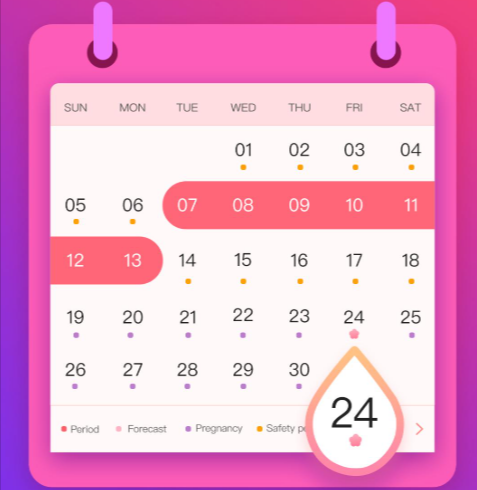Dapagliflozin
What is dapagliflozin?
Dapagliflozin is a prescription medication that is mainly used alongside diet and exercise to help treat type 2 diabetes, but it is also used in the treatment of heart failure. It was first approved by the US Food and Drug Administration (FDA) in 2014.
Dapagliflozin is a sodium-glucose cotransporter 2 (SGLT2) inhibitor. This class of drug uses the kidneys to help control your glucose (blood sugar) levels. It works by increasing the amount of glucose removed from the body when you urinate. It also reduces the amount of effort your heart has to put in to pumping blood around your body.
What is dapagliflozin used for?
- Dapagliflozin is a prescription medicine used:
- along with diet and exercise to improve blood sugar (glucose) control in adults with type 2 diabetes
- to reduce the risk of hospitalization for heart failure in adults with type 2 diabetes who also have known cardiovascular disease or multiple cardiovascular risk factors
- to reduce the risk of cardiovascular death, hospitalization for heart failure in adult patients with heart failure, when the heart is weak and cannot pump enough blood to the rest of your body
- to reduce the risk of further worsening of your kidney disease, end-stage kidney disease (ESKD), death due to cardiovascular disease, and hospitalization for heart failure in adults with chronic kidney disease.
- Dapagliflozin is not for people with type 1 diabetes. Dapagliflozin may increase the risk of diabetic ketoacidosis (increased ketones in your blood or urine) in people with type 1 diabetes.
- Dapagliflozin is not for use to improve blood sugar (glucose) control in adults with type 2 diabetes who have moderate to severe kidney problems, because it may not work.
- Dapagliflozin is not for people with certain genetic forms of polycystic kidney disease, or who are taking or have recently received immunosuppressive therapy to treat kidney disease. Dapagliflozin is not expected to work if you have these conditions.
- It is not known if dapagliflozin is safe and effective in children younger than 18 years of age.
What are the side effects of dapagliflozin?
Dapagliflozin may cause serious side effects, including:
- See “Important information” above.
- Ketoacidosis in people with diabetes mellitus (increased ketones in your blood or urine). Ketoacidosis has happened in people who have type 1 diabetes or type 2 diabetes, during treatment with dapagliflozin. Ketoacidosis has also happened in people with diabetes who were sick or who had surgery during treatment with dapagliflozin. Ketoacidosis is a serious condition, which may need to be treated in a hospital. Ketoacidosis may lead to death. Ketoacidosis can happen with dapagliflozin even if your blood sugar is less than 250 mg/dL. Stop taking dapagliflozin and call your healthcare provider right away if you get any of the following symptoms:
- nausea
- vomiting
- stomach area (abdominal) pain
- tiredness
- trouble breathing
If you get any of these symptoms during treatment with dapagliflozin, if possible, check for ketones in your urine, even if your blood sugar is less than 250 mg/dL.
- Serious urinary tract infections. Serious urinary tract infections that may lead to hospitalization have happened in people who are taking dapagliflozin. Tell your healthcare provider if you have any signs or symptoms of a urinary tract infection such as a burning feeling when passing urine, a need to urinate often, the need to urinate right away, pain in the lower part of your stomach (pelvis), or blood in the urine. Sometimes people also may have a fever, back pain, nausea or vomiting.
- Low blood sugar (hypoglycemia) in patients with diabetes mellitus. If you take dapagliflozin with another medicine that can cause low blood sugar, such as a sulfonylurea or insulin, your risk of getting low blood sugar is higher. The dose of your sulfonylurea medicine or insulin may need to be lowered while you take dapagliflozin. Signs and symptoms of low blood sugar may include:
- headache
- shaking or feeling jittery
- irritability
- fast heartbeat
- weakness
- drowsiness
- sweating
- confusion
- dizziness
- hunger
- A rare but serious bacterial infection that causes damage to the tissue under the skin (necrotizing fasciitis) in the area between and around the anus and genitals (perineum). Necrotizing fasciitis of the perineum has happened in women and men with diabetes mellitus who take dapagliflozin. Necrotizing fasciitis of the perineum may lead to hospitalization, may require multiple surgeries, and may lead to death. Seek medical attention immediately if you have fever or you are feeling very weak, tired, or uncomfortable (malaise) and you develop any of the following symptoms in the area between and around the anus and genitals:
- pain or tenderness
- swelling
- redness of skin (erythema)
The most common side effects of dapagliflozin include:
- vaginal yeast infections and yeast infections of the penis
- stuffy or runny nose and sore throat
- changes in urination, including urgent need to urinate more often, in larger amounts, or at night
These are not all the possible side effects of dapagliflozin. For more information, ask your healthcare provider or pharmacist.
Before taking this medicine
Before you take dapagliflozin, tell your healthcare provider if you:
- have type 1 diabetes or have had diabetic ketoacidosis.
- have liver problems.
- have a history of urinary tract infections or problems urinating.
- are going to have surgery. Your doctor may stop your dapagliflozin before you have surgery. Talk to your doctor if you are having surgery about when to stop taking dapagliflozin and when to start it again.
- are eating less or there is a change in your diet.
- have or have had problems with your pancreas, including pancreatitis or surgery on your pancreas.
- drink alcohol very often or drink a lot of alcohol in the short term (“binge” drinking).
How should I take dapagliflozin?
- Take dapagliflozin exactly as your healthcare provider tells you to take it.
- Do not change your dose of dapagliflozin without talking to your healthcare provider.
- Take dapagliflozin by mouth 1 time each day, with or without food.
- Stay on your prescribed diet and exercise program while taking dapagliflozin.
- Dapagliflozin will cause your urine to test positive for glucose.
- Your healthcare provider may do certain blood tests before you start dapagliflozin and during your treatment.
- If you have diabetes
- When your body is under some types of stress, such as fever, trauma (such as a car accident), infection, or surgery, the amount of diabetes medicine you need may change. Tell your healthcare provider right away if you have any of these conditions and follow your healthcare provider’s instructions.
- Your healthcare provider will check your diabetes with regular blood tests, including your blood sugar levels and your HbA1c.
- Follow your healthcare provider’s instructions for treating low blood sugar (hypoglycemia). Talk to your healthcare provider if low blood sugar is a problem for you.
Dosing information
- Estimated glomerular filtration rate (eGFR) 45 mL/min/1.73m2 or greater: To improve glycemic control, the recommended starting dose is 5mg orally once daily. Dose can be increased to 10mg orally once daily for additional glycemic control. For all other indications, the recommended starting dose is 10mg orally once daily.
- eGFR 25 mL/min/1.73m2to less than 45: 10 mg orally once daily
- eGFR less than 25 mL/min/1.73m2: Initiation is not recommended, however patients may continue 10mg orally once daily to reduce the risk of eGFR decline, ESKD, CV death and hHF.
- On dialysis: Contraindicated
Interaction
Health Tools
Related/Similar Drugs
Dapagliflozin
Home What is dapagliflozin? Dapagliflozin is a prescription medication that is mainly used alongside diet and exercise to help treat […]
Insulin glargine
Home What is insulin glargine? Insulin glargine is a long-acting insulin used to treat type 1 and type 2 diabetes in certain […]
Sitagliptin
Home What is sitagliptin? Sitagliptin is used with diet and exercise to improve blood sugar control in adults with type […]
Metformin
Home What is metformin? Metformin is an FDA-approved antidiabetic agent that manages high blood sugar levels in type 2 diabetes […]
Glimepiride
Home What is glimepiride? Glimepiride is an oral diabetes medicine that is used together with diet and exercise to improve […]




